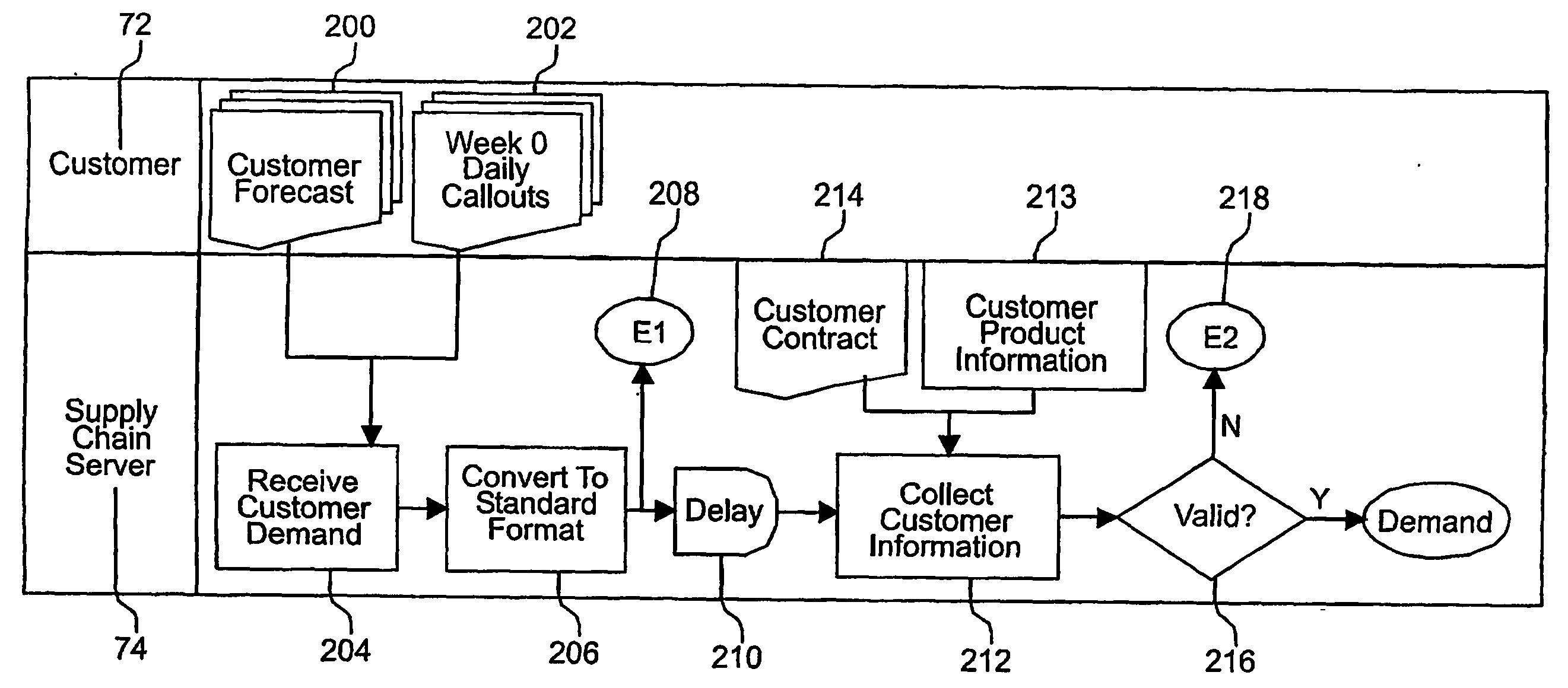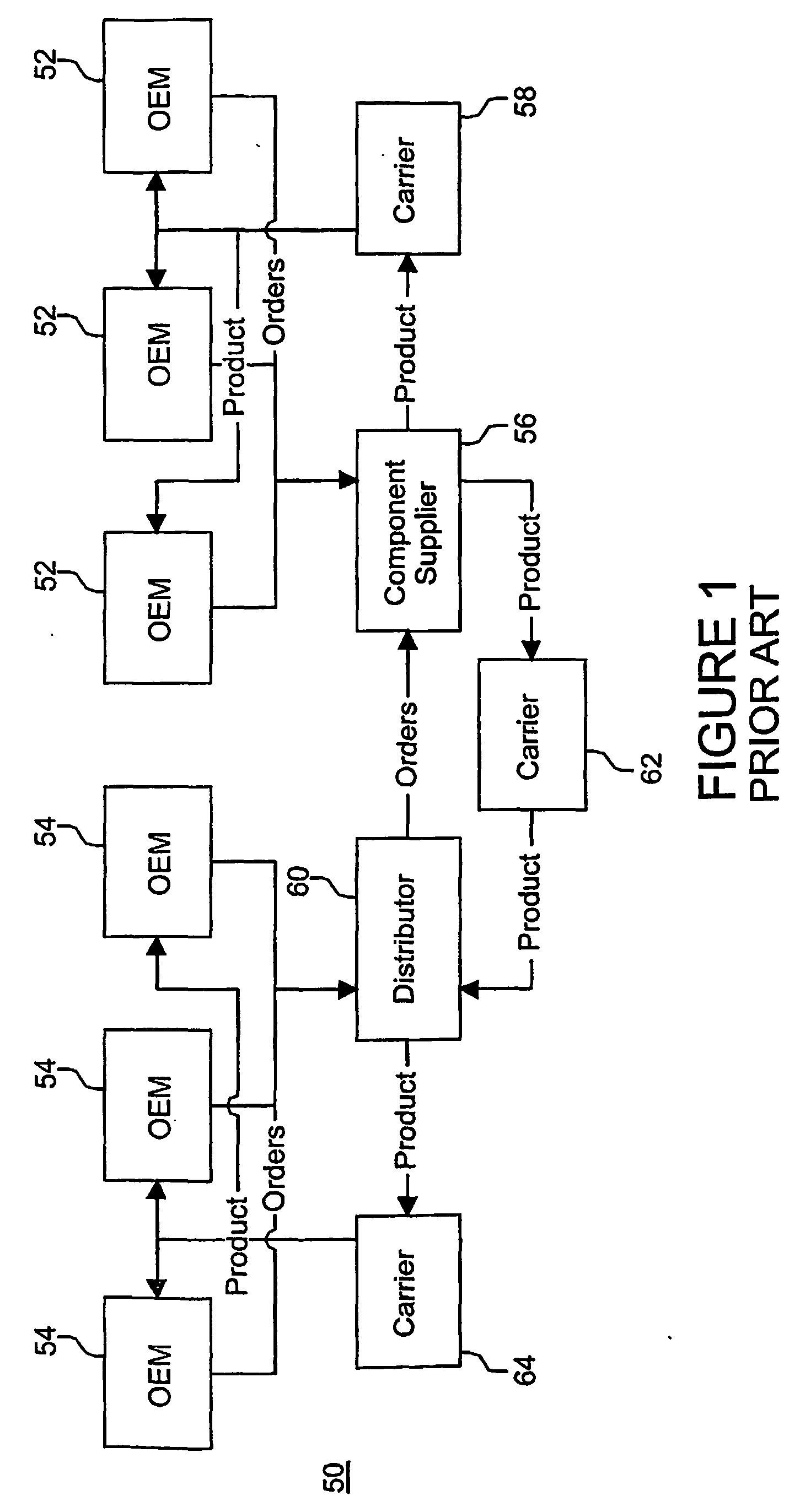Supply chain network
a supply chain and network technology, applied in the field of supply chain network, can solve the problems of short of product components, manufacturers often find themselves paying higher prices, and the supply chain management is a substantial portion of their cost, and achieve the effect of improving the scale of economics
- Summary
- Abstract
- Description
- Claims
- Application Information
AI Technical Summary
Benefits of technology
Problems solved by technology
Method used
Image
Examples
Embodiment Construction
General Overview:
[0065] In the following description, terms describing processes and hardware are used interchangeably as the functions described could be implemented using many different forms of hardware, software, or even manually.
[0066] Referring to FIG. 2, a general overview of a many-to-many supply chain network in accordance with the invention is shown.
[0067] Supply chain network 70 includes customers 72 of any size. Customers 72 each place forecasts or orders with a supply chain server 74. Although supply chain server 74 typically will include a computer, it will be referred to throughout the description as an entity capable of entering into a contractual relationship. It should be understood that in such descriptions, the operator of the server will be the real party in the contract. It should also be understood that supply chain server 74 need not be implemented as a computer.
[0068] Supply chain server 74 accumulates demand forecasts from customers 72 who are using th...
PUM
 Login to View More
Login to View More Abstract
Description
Claims
Application Information
 Login to View More
Login to View More - R&D
- Intellectual Property
- Life Sciences
- Materials
- Tech Scout
- Unparalleled Data Quality
- Higher Quality Content
- 60% Fewer Hallucinations
Browse by: Latest US Patents, China's latest patents, Technical Efficacy Thesaurus, Application Domain, Technology Topic, Popular Technical Reports.
© 2025 PatSnap. All rights reserved.Legal|Privacy policy|Modern Slavery Act Transparency Statement|Sitemap|About US| Contact US: help@patsnap.com



